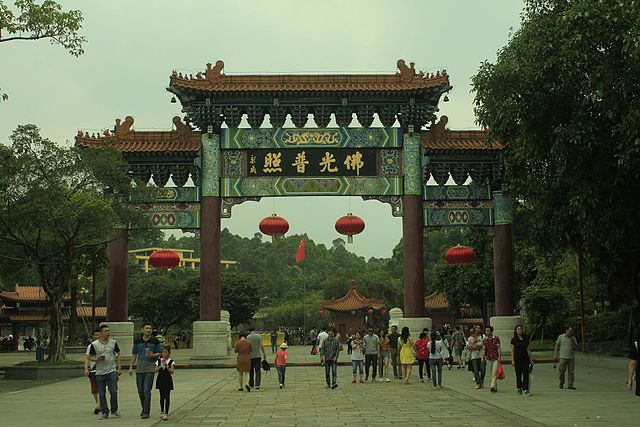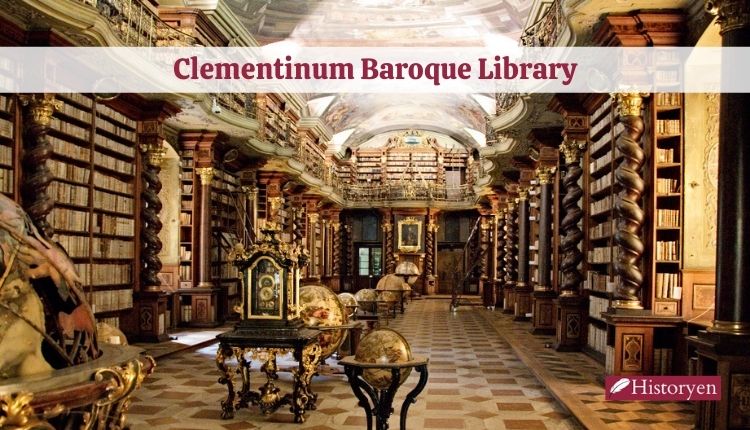Introduction
Guanyin Temple, nestled amidst picturesque surroundings, stands as a testament to spirituality and devotion. This sacred place holds immense significance in Buddhism, attracting pilgrims, tourists, and seekers of inner peace from around the world. In this article, we will delve into the captivating history, architecture, rituals, and profound symbolism associated with Guanyin Temple.
The Origins of Guanyin Temple

According to legend, Guanyin Temple has a rich and fascinating history that spans over a thousand years. It is said that the temple was established by a revered Buddhist monk who sought solace and enlightenment in the serene surroundings. This monk dedicated himself to the practice of Buddhism and envisioned a sacred place where devotees could gather, worship, and cultivate spiritual growth.
The exact date of the temple’s founding remains a subject of debate, as historical records from that time are scarce. However, it is widely believed that Guanyin Temple’s origins can be traced back to the Tang Dynasty (618-907 AD), a golden age of Buddhism in China.
The temple’s founding monk, driven by a deep sense of devotion and a desire to spread the teachings of Buddhism, embarked on a journey to find an ideal location for the temple. Legend has it that he discovered a serene spot nestled amidst picturesque surroundings—a place imbued with natural beauty and spiritual energy. It was here that Guanyin Temple took root and began its remarkable journey as a spiritual haven.
Over the centuries, Guanyin Temple has undergone various expansions, renovations, and additions, each contributing to its architectural grandeur and spiritual significance. Skilled craftsmen and artisans meticulously designed and adorned the temple with intricate artwork, sculptures, and scriptures, creating a space that exudes beauty, harmony, and reverence.
Throughout its history, Guanyin Temple has withstood the test of time, surviving wars, political upheavals, and social changes. Its enduring presence stands as a testament to the unwavering faith and devotion of its founders, as well as the countless devotees and patrons who have upheld its legacy.
Today, Guanyin Temple continues to inspire and attract visitors from all corners of the globe. Its historical and cultural significance, coupled with its tranquil ambiance, makes it a cherished destination for spiritual seekers, tourists, and those seeking a respite from the chaos of the modern world.
Rituals and Practices at Guanyin Temple

At Guanyin Temple, a range of rituals and practices are observed, creating a sacred and spiritually charged atmosphere for devotees and visitors. These practices are deeply rooted in Buddhist traditions and are aimed at cultivating inner peace, fostering compassion, and deepening one’s spiritual connection.
- Chanting: The rhythmic chanting of sacred mantras is a common practice at Guanyin Temple. Devotees gather in the prayer halls, led by monks or experienced practitioners, to chant sutras and mantras. The repetitive nature of chanting helps quiet the mind, induce a meditative state, and create a harmonious environment conducive to spiritual contemplation.
- Meditation: Guanyin Temple provides a tranquil setting for meditation practice. Meditation sessions are often held, allowing individuals to cultivate mindfulness, focus their thoughts, and develop a deeper sense of self-awareness. The temple offers guidance to beginners and advanced practitioners alike, fostering a supportive environment for inner reflection and spiritual growth.
- Prostration: Prostration, or bowing, is a physical expression of devotion and humility. Devotees may engage in prostration as a way to show reverence to Guanyin Bodhisattva and express their gratitude. It is a practice that helps cultivate humility, reduce ego, and deepen one’s connection with the divine.
- Offerings: Making offerings is another integral aspect of Buddhist practice at Guanyin Temple. Devotees often bring symbolic items such as flowers, incense, candles, and food as offerings to express their reverence and gratitude. These offerings are seen as acts of generosity and create a sense of connection with the divine and the community.
- Confession and Purification: Guanyin Temple provides a space for devotees to engage in confession and purification rituals. Through these practices, individuals reflect on their actions, seek forgiveness, and strive for inner purification. Confession is seen as a transformative process that allows for personal growth and the cultivation of a pure heart.
- Sutra Study: Guanyin Temple also offers opportunities for devotees to study Buddhist scriptures and teachings. This practice allows individuals to deepen their understanding of the Dharma, gain wisdom, and apply the teachings to their daily lives. Sutra study sessions may involve group discussions, lectures, and guided readings.
These rituals and practices at Guanyin Temple create a harmonious and sacred environment that nurtures the spiritual well-being of its visitors. Whether through chanting, meditation, prostration, or acts of offering, devotees find solace, guidance, and a deeper connection to the profound teachings of Buddhism.
Note: The specific rituals and practices may vary at different Guanyin Temples or according to local customs and traditions. The information provided here offers a general overview of the common practices observed at Guanyin Temple.
Exploring the Temple Complex

Guanyin Temple boasts a sprawling complex that invites visitors to embark on a captivating journey of exploration and discovery. From majestic entrance gates to intricately designed prayer halls, every corner of the temple complex is infused with artistry, symbolism, and spiritual significance. Here are some key areas you can explore within the temple complex:
- Entrance Gate: As you enter Guanyin Temple, you are greeted by a grand entrance gate that sets the tone for the spiritual journey ahead. These gates are often adorned with ornate decorations, intricate carvings, and symbolic motifs, serving as a threshold between the mundane world and the sacred realm of the temple.
- Main Prayer Hall: The main prayer hall stands as the heart of Guanyin Temple. This expansive hall is where devotees gather to offer prayers, pay respects to Guanyin Bodhisattva, and engage in spiritual practices. The hall’s architecture is often awe-inspiring, featuring intricate woodwork, colorful murals, and statues depicting various Buddhist deities.
- Side Halls and Altars: Guanyin Temple may also house several side halls and altars dedicated to different deities and bodhisattvas. These areas provide spaces for specific forms of worship and devotion. Each altar is adorned with beautiful sculptures, paintings, and offerings, creating an atmosphere of reverence and spiritual connection.
- Meditation Rooms: Guanyin Temple often includes dedicated meditation rooms or quiet corners where visitors can retreat for contemplation and introspection. These serene spaces offer a tranquil environment for individuals to practice meditation, reflect on their thoughts, and cultivate inner peace.
- Gardens and Courtyards: The temple complex is often surrounded by beautifully landscaped gardens and peaceful courtyards. These outdoor spaces provide a serene setting for visitors to stroll, enjoy nature, and find moments of tranquility amidst the bustling world. Lush greenery, blooming flowers, and serene ponds contribute to the overall ambiance of peace and harmony.
- Scripture Repository: Some Guanyin Temples house a scripture repository where ancient Buddhist scriptures and texts are preserved. These repositories are considered sacred spaces and are often adorned with elaborate carvings and calligraphy. They serve as a reminder of the profound wisdom contained within the scriptures and offer opportunities for scholarly study and research.
During your exploration of the temple complex, it is common to encounter intricate artwork, statues, and inscriptions that depict stories from Buddhist scriptures and teachings. These artistic displays not only showcase the skilled craftsmanship of the artisans but also serve as visual representations of profound spiritual concepts and virtues.
Remember to be respectful during your exploration, observing any guidelines or restrictions set by the temple authorities. By immersing yourself in the temple complex, you can appreciate the architectural marvels, immerse yourself in the spiritual ambiance, and gain a deeper understanding of the rich cultural heritage preserved within Guanyin Temple.
Preservation Efforts and Cultural Heritage

Guanyin Temple stands as a living testament to rich cultural heritage. Efforts are continuously made to preserve its historical significance and architectural marvels. The temple authorities work tirelessly to safeguard and restore the intricate artworks, scriptures, and artifacts, ensuring future generations can experience the temple’s awe-inspiring beauty.
Contributions of Guanyin Temple to Buddhism

Guanyin Temple has made significant contributions to the preservation, propagation, and development of Buddhism throughout its history. The temple’s influence extends beyond its physical presence, touching the lives of countless individuals and communities. Here are some key contributions of Guanyin Temple to Buddhism:
- Spiritual Development: Guanyin Temple has served as a nurturing space for spiritual development and growth. Through its teachings, practices, and rituals, the temple has guided individuals on the path of self-discovery, compassion, and enlightenment. It has provided a supportive environment for seekers to deepen their understanding of Buddhist philosophy and cultivate virtues such as kindness, wisdom, and mindfulness.
- Educational Initiatives: Guanyin Temple has played a vital role in disseminating Buddhist teachings and knowledge. It has established educational initiatives, including Buddhist schools, monastic training programs, and lectures, to educate both monastic and lay communities. These efforts have contributed to the preservation and transmission of Buddhist scriptures, philosophy, and practices to future generations.
- Charitable Endeavors: Guanyin Temple has been actively involved in charitable activities, embodying the spirit of compassion and service. The temple often engages in humanitarian projects, such as providing relief to the needy, supporting orphanages, offering medical assistance, and organizing community welfare programs. These charitable endeavors reflect the teachings of Buddhism, emphasizing the importance of caring for others and alleviating suffering.
- Cultural Preservation: Guanyin Temple has been a custodian of Buddhist cultural heritage. The temple authorities have taken significant measures to preserve and restore ancient scriptures, artifacts, and artworks. By safeguarding these treasures, the temple ensures that future generations can appreciate the artistic, historical, and religious significance of Buddhism.
- Interfaith Dialogue and Harmony: Guanyin Temple has played a pivotal role in promoting interfaith dialogue and fostering harmony among different religious communities. Through open dialogues, joint events, and collaborations, the temple has facilitated understanding, tolerance, and mutual respect among diverse religious traditions. It serves as a bridge that transcends religious boundaries and encourages the celebration of shared values and universal teachings.
- Environmental Stewardship: Guanyin Temple recognizes the interconnectedness of all living beings and the importance of environmental conservation. Many temples actively engage in eco-friendly practices, promoting sustainability, and raising awareness about ecological issues. These initiatives align with Buddhist principles of non-harm and respect for the natural world, making a positive impact on both local communities and the global environment.
The contributions of Guanyin Temple to Buddhism extend far beyond the physical structures and rituals. The temple’s dedication to spiritual development, education, charity, cultural preservation, interfaith dialogue, and environmental stewardship reflects the core teachings of Buddhism and its profound impact on individuals and society.
Conclusion
Guanyin Temple stands as a beacon of spirituality, drawing seekers from all walks of life. Its rich history, awe-inspiring architecture, and profound rituals create an atmosphere of tranquility and devotion. Whether one seeks solace, spiritual enlightenment, or a deeper understanding of Buddhism, Guanyin Temple offers a sanctuary where the heart and soul can find solace and renewal.



